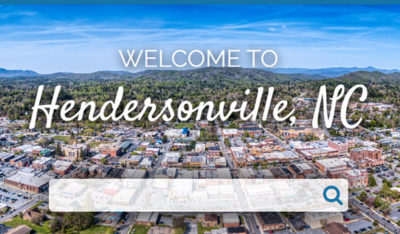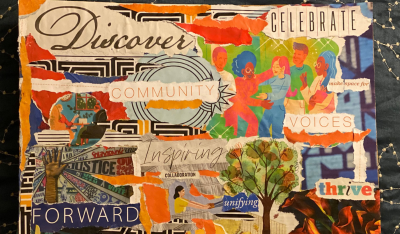
Government organizations are tasked with conducting community engagement initiatives with limited budget, time, and resources — as are the consultants who work with them. One way to get the job done while still achieving successful community engagement outcomes is the strategic use of gov tech, such as community engagement software.
Used strategically, community engagement software enables local governments to actively reach residents, create meaningful engagement, analyze input, and deliver comprehensive reports for decision makers. Before you get started, it’s best to assess your current community engagement systems and processes.
After your assessment and as you begin to plan for your budget, here are several ways you can use community engagement software without breaking the budget.
1. Meet residents where they are.
To get critical, equitable community engagement, local government and consultants are turning to a more holistic approach: using smart data to create a more efficient and cost-saving community engagement strategy. For example, there are community engagement tools like Equity Mapping that overlay demographic data with community engagement data on an interactive map to better understand communities and fill in gaps on day one.
This does not mean simply discarding these tried and true practices in exchange for “online engagement” but at the same time, independent of a holistic approach, they leave a number of questions unanswered. The ideal outcome is to reach a representative group of residents and understand all of their input in a meaningful way, efficiently.
Fortunately, community engagement software exists to help achieve this, but with such a broad definition of ‘successful’ engagement, clear goals aligned with key performance indicators along the way are necessary, regardless of the technology you choose.
2. Reach the residents who will be impacted the most.
Broad community engagement goals are easy to envision, but a detailed and tactical approach should include tools tailored to the preferences and demographics of each unique community.
Consider the time and expense of achieving a representative sample in a rural area with only a “boots on the ground” approach: traveling to physical sites, determining if your demographic understanding of that location was correct, paying for advertisements, asking citizens to engage with you face-to-face, and more. The challenge is that after all of this effort, we are often still asking if we reached the residents who will be affected the most — and who we may have missed that could come into the conversation later, forcing project delays or even litigation.
Tailoring your project’s approach ultimately means tailoring your approach to community engagement by identifying challenges. Asking yourself these key questions prior to each community engagement outreach effort will help define the tools you will need to utilize:
-
- Does the community’s staff have access to past engagement records?
- Where are the traditionally underrepresented groups that you will need to reach?
- Is there a congregation of residents who primarily speak another language?
- What are the census demographics of the project area?
- Do these residents have reliable access to broadband?
- What is the misconception that needs to be addressed head on to avoid setbacks?
- Does the public trust you to make a decision based on their best interests?
3. Reduce time and effort with the right tools in place.
Any well-designed tool will reduce the amount of effort you need to excerpt – but only the right community engagement software will ensure that you are able to make the most of your efforts. This means being able to house all your public input in one place, not siloed off and isolated in a number of different platforms, which makes aggregating input laborious and more difficult to tell a clear story.
The right community engagement software should go beyond a one-off survey tool like SurveyMonkey to reach a representative audience, reliably capture input, and close the communication loop. If you’re working in a low-density and low-income area, getting the word out and increasing project awareness is critical. This means taking advantage of an all-in-one software to control:
-
- Project websites
- Location data to identify “gap” areas
- Census data comparison to understand demographic representation
- Social media outreach and targeting
- Combining print and signage with text messaging
- Video broadcasting via Facebook and YouTube
When it comes to community engagement, focus on conserving billable hours through efficiency – which can be achieved through a technology designed specifically for local governments to improve relationships with residents while following a vetted community engagement process.
4. Complement your online and offline engagement efforts.
The best way to optimize engagement is to combine offline and online community engagement. Online, sharing a link to a project website or survey can be done through existing communication channels: social media, website, and email. Pointing to these same project websites and surveys offline should be done as well by sharing custom website addresses, QR codes, and text-in numbers on signage, print collateral, and newspaper ads.
Best practice dictates that online and offline efforts need to complement each other as well. For example, using location data to understand where you are getting feedback from during an initial online outreach, and then hosting public meetings in those hard-to-reach areas. Or you might mail out fliers to a Spanish speaking community with its own custom survey link so you can track engagement results to that specific outreach effort.
If this sounds like a budget-breaking workload, it’s important to remember that your budget should not throttle the voice you give to those whose lives are going to be most impacted by your projects. We’ve seen communities harness the power of comment analysis, input collection, and reporting in real-time during in-person meetings combined with online town halls.
It’s time to focus on your unique challenges before you assign a solution, just like any other project. And when faced with tight budgets, increasing the certainty in the return on investment means tailoring an approach that uses every available communication channel, and leveraging tracking for each of those outreach strategies. Robust and meaningful community engagement efforts can be efficient and effective, but only if we think outside the box and take advantage of the government technology available today.
Maximize your budget with the right government technology.
When you’re in the thick of budget planning, it’s tough doing all of the research behind making a smart technology investment, along with your regular day job responsibilities. Use our buyer’s guide to quickly discover key questions to consider when choosing a public engagement software. It covers topics like:
-
- Does the solution give you the ability to engage the public through multiple formats?
- Can you easily understand and demonstrate how representative public feedback was of your community?
- Do engagement opportunities create more meaningful feedback by providing context for residents?
- Is the software designed to give consultants working with your organization a great experience?



